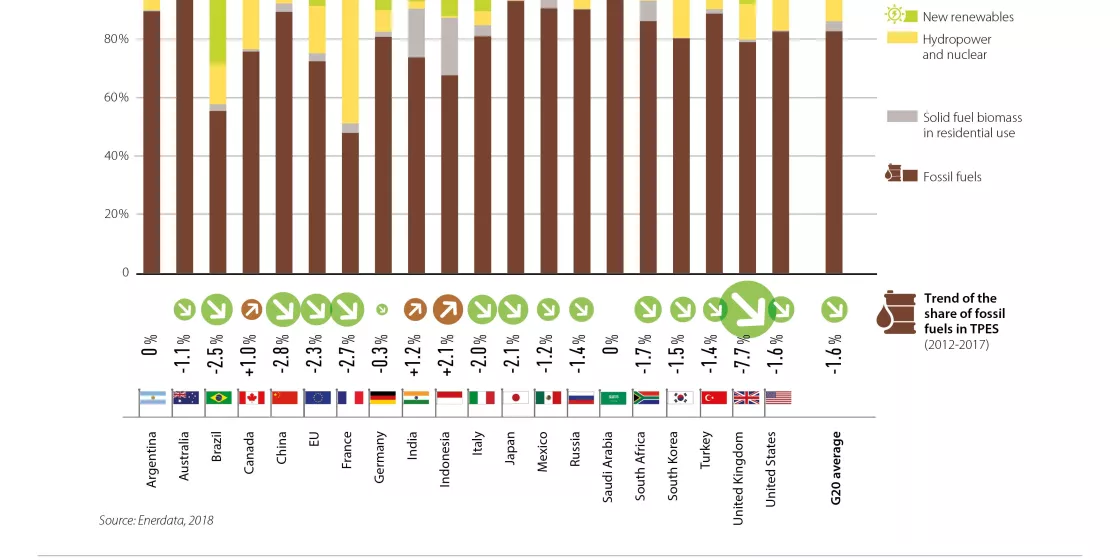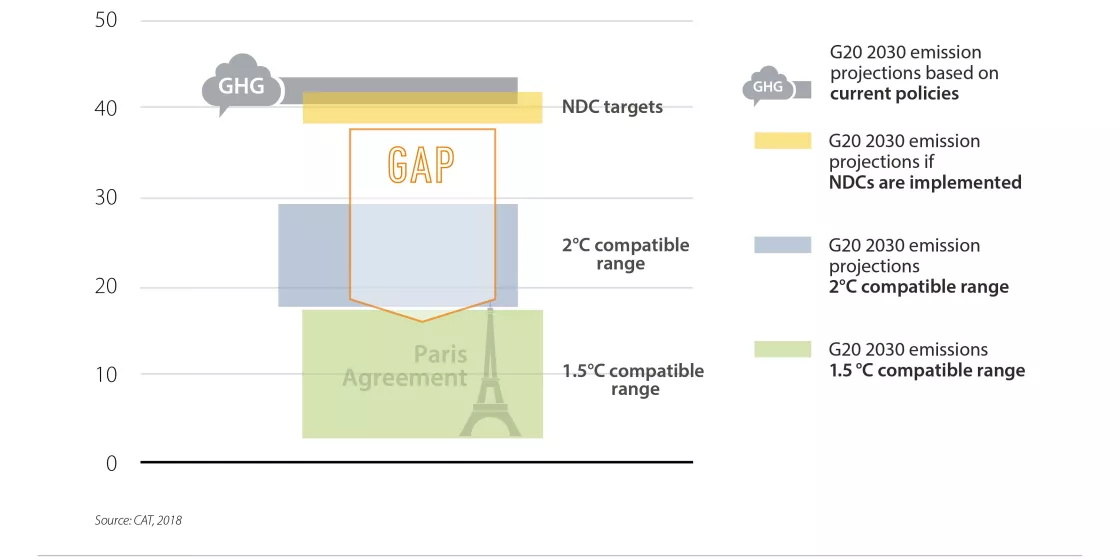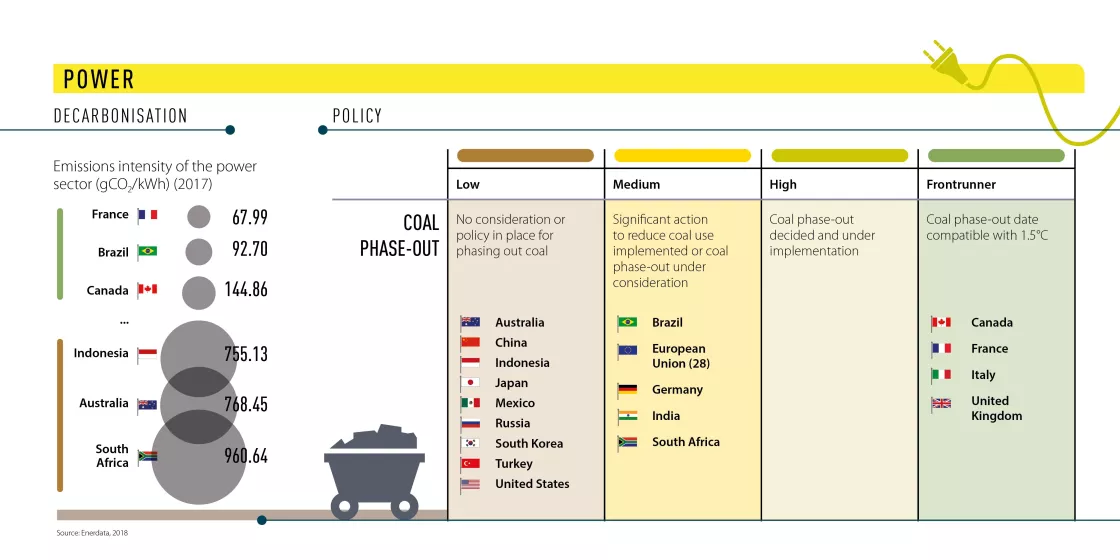
The Brown to Green Report is the world’s most comprehensive annual review of G20 climate action, assessing progress on decarbonisation, climate policies, finance, and vulnerability to the impacts of climate change. The report is published annually by Climate Transparency, a global partnership of 14 climate research organisations and NGOs from the majority of G20 countries, many from emerging economies. Germanwatch is one of the main authors.
Main findings of the Brown to Green Report 2018:
In 15 of the G20 countries, energy-related CO2 emissions increased again in 2017, and 82% of the G20 energy supply still comes from fossil fuels.
The G20 countries are responsible for around 80% of global greenhouse gas emissions. Energy-related CO2 emissions – the highest share of GHG emissions – of the G20 countries grew by around 60% since 1990. In 2015 and 2016 these G20 emissions stalled and raised hope that the trend would reverse, but in 2017 they started to increase again.
On average, 82% of the energy supply in the G20 countries still comes from fossil fuels – the share even increased in Canada, India and Indonesia between 2012 and 2017. The United Kingdom managed to significantly reduce its share of fossil fuels in the energy mix, followed by China and France.

Brown to Green Report 2018: Share of fossil fuels and zero carbon technologies in TPES
Collectively, the G20 needs roughly to halve greenhouse gas emissions in 2030 to meet the Paris goals, but adequate long-term strategies to do so are still lacking.
Currently, none of the G20 NDC targets for 2030 is in line with the Paris Agreement goal to keep temperature increase well below 2°C or below 1.5°C. To keep global warming below 1.5C, G20 countries would need to cut their emissions in half by 2030. India’s NDC is the most ambitious, closest to the 1.5°C limit. The NDCs of Russia, Saudi Arabia and Turkey would lead to a warming that exceeds 4°C, if all governments were to have similar levels of ambition for their targets. A number of G20 countries are expected to miss their NDC targets if they do not adopt additional policies. No G20 country has a long-term strategy to bring CO2 emissions down to net-zero by 2050.

Brown to Green Report 2018: Gap between G20 NDC targets and 1.5°C
G20 countries still provide 147billion USD in fossil fuel subsidies although they have promised since 2009 to phase-out these subsidies
Nearly all G20 countries spend more on fossil fuel subsidies than they receive in public revenues from explicit carbon pricing. Only Canada and France generate more public revenues through explicit carbon pricing than they spend on fossil fuel subsidies. The G20 countries providing the highest amounts of fossil fuel subsidies per unit of GDP are Saudi Arabia, Italy, Australia and Brazil. Several G20 countries – developed and emerging economies – have introduced green finance policies. France, the European Union and Japan are leading in implementing climate-related financial disclosure policies.
The G20 countries that need to do most in the power and transport sectors lack concrete actions.
- Power: South Africa, Australia and Indonesia have the highest emission intensity in the power sector and lack concrete actions to phase out coal. Canada, France, Italy and UK have decided to phase-out coal.
- Transport: France, Japan and the United Kingdom lead the G20 with phase-out plans for fossil fuel cars. The United States, Canada and Australia have the highest transport emissions per capita but lack adequate fuel efficiency standards.
- Industry: Only the European Union receives a high policy rating because of its target for new installations in emission-intensive sectors to be low-carbon. South Africa, China and Russia lag behind.
- Buildings: Canada, Germany and the United States show the highest direct building emissions per capita (not counting the emissions from commercial heat and electricity) in the G20. The 1.5°C-compatible EU policy of near zero-energy buildings by 2020/25 for new buildings could be a model for other G20 countries.
- Forestry: Indonesia, Argentina and Brazil have had the highest forest loss since 1990, and they do not show sufficient action to reverse this trend. A strategy for net zero deforestation by 2020 would be 1.5°C-compatible.

Brown to Green Report 2018: Power decarbonisation and policy rating




